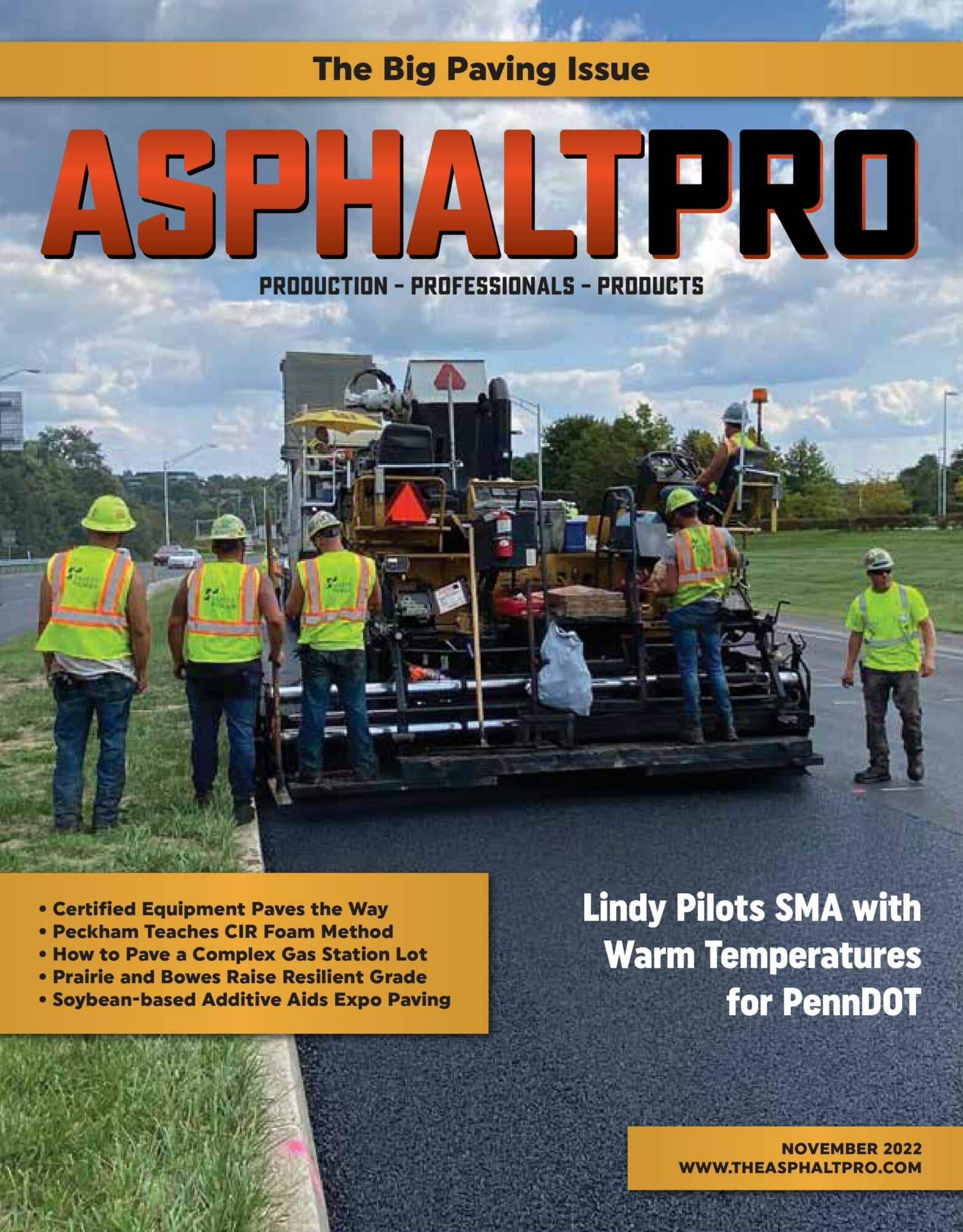Oct 25, 2022
Pave Resiliently
BY Sandy Lender

The asphalt industry comprises more than a few exemplary contractors who pave with best practices day in and day out. They train new workers to do the same and they take home bonuses, awards and renewed contracts from satisfied customers for their hard work. The traveling public receives long-lasting pavements as a result of this hard work.
Along comes a bureaucrat who says, “Hey, I think you should pave a different way, so the pavement is resilient.”
I’d argue that the pavement is resilient, but, for argument’s sake, let’s get a definition on that. According to the “New College Edition of The American Heritage Dictionary of The English Language,” resilience, a noun, is, “The ability to recover quickly from illness, change, or misfortune; buoyancy.” It can also be, “The property of a material that enables it to resume its original shape or position after being bent, stretched, or compressed; elasticity.”
Last I checked, the Asphalt Pavement Alliance (APA) was handing out awards for asphalt pavements that have been able to recover quickly from minor misfortunes that don’t require more than 3 inches of structural assistance over their lifetimes of 50 years and longer. Visit driveasphalt.org/awards for more information on that. For this note’s purposes, we’re gonna call that resilient.
Of course, a pavement built before 1972 was designed with an earlier set of standards and codes than the structures we’re engineering today. As an industry, collectively, we’ve advanced in technology and understanding. Even though our pavements are lasting “a long time,” we can—and do—build them even better now, to last even longer under new and more demanding stressors.
Codes and standards change over time as engineers learn more and the materials they work with or have access to advance. I’ll bring up the original Sunshine Skyway Bridge, opened to traffic over the intracoastal waters of Tampa Bay 1954, as an example. On the morning of May 9, 1980, the Summit Venture encountered rough waters and near-zero visibility as it approached the bridge and, tragically, impacted Pier 2S. The west span of the cantilever bridge collapsed and 35 people died in the water below. Did engineers prior to 1954 realize a ship to be commissioned in 1976 would weigh 33,912 tons without cargo and would, at a reduced speed of 6 nautical mph, ram into an ineffective support?
A larger question: should the engineers prior to 1954 have consulted a crystal ball and foreseen the types of vessels and early morning weather conditions 1980 Tampa Bay would collude to present? Could the engineers prior to 1954 have guessed that two vessels would strike the southbound bridge Feb. 5 and the southwest support Feb. 16 of that year, potentially compounding structural weaknesses of the supports?
What I’d like to suggest is engineers, designers, mathematicians, bridge builders and paving contractors in today’s world work with ever-evolving codes and regulations that result in incredibly strong—dare I say resilient—elements of infrastructure.
Sometimes, natural disasters or unforeseen accidents plow through best intentions and the most up-to-date codes. Sometimes, you can’t guess what the future will bring.
What the asphalt industry can do is build long-lasting structures for the future with lower carbon and low-emission materials available today. This edition of AsphaltPro focuses on best paving practices, but it’s sprinkled with environmentally friendly practices as well. Check out Sarah Redohl’s reporting on page 28 where Prairie State Trucking and Bowes Construction raised the grade of I-81 on a 100-year floodplain. Check out Peckham Industries Inc.’s efforts to raise awareness of best practices for cold in-place recycling in the northeast on page 18. Check out the use of a soybean-based additive to fortify reclaimed asphalt pavement (RAP) millings in Iowa on page 34. These are not isolated incidents of our industry’s work toward increasing the life of pavement structures, thus offering enhanced resiliency of roads for anyone who’s paying attention.
Stay Safe,
Sandy Lender